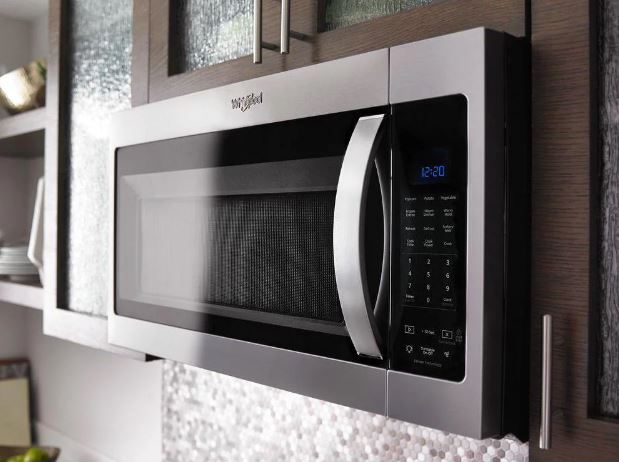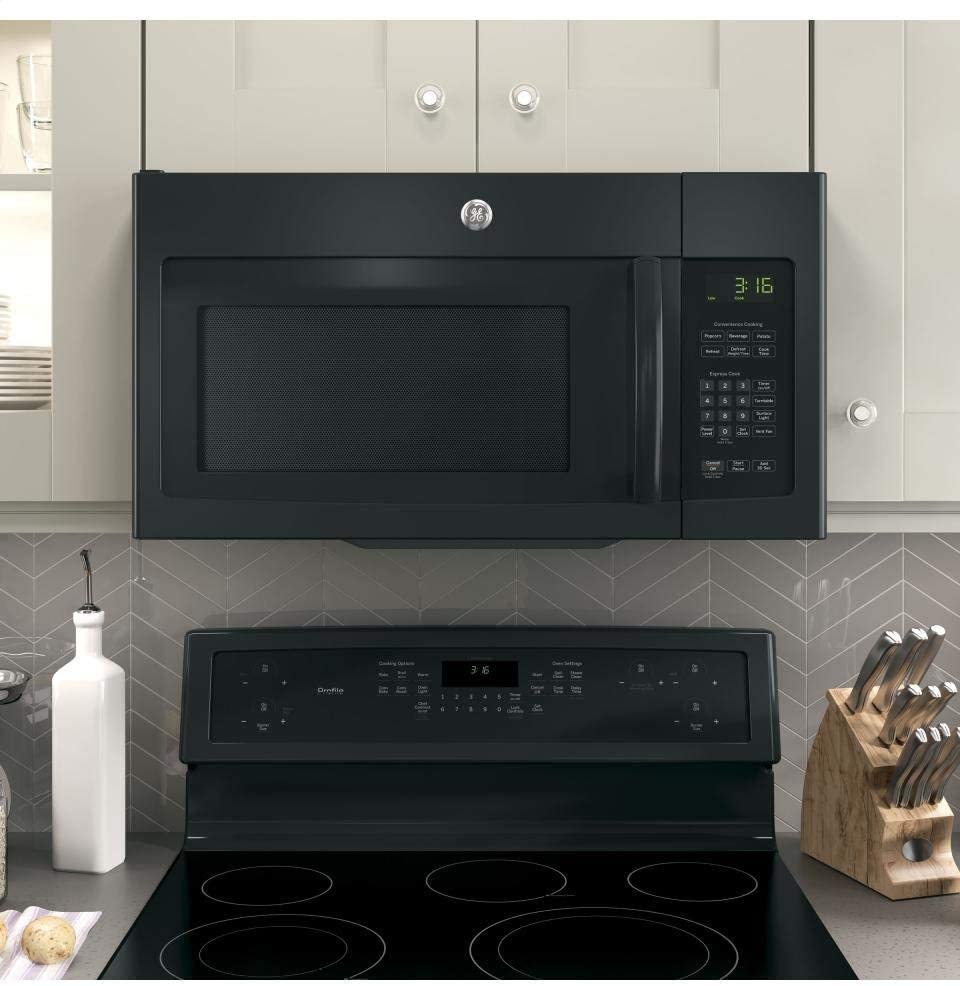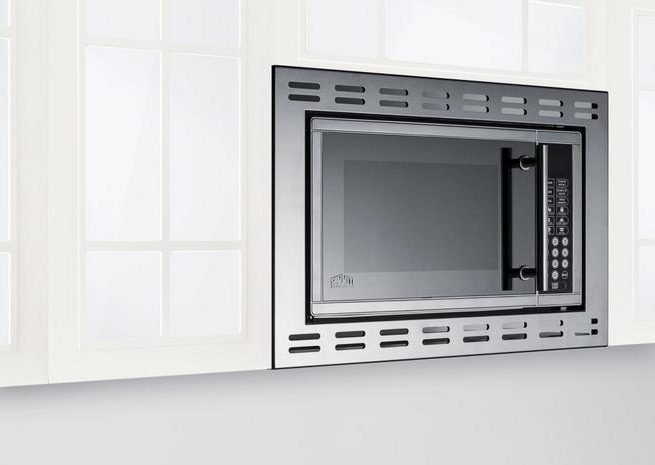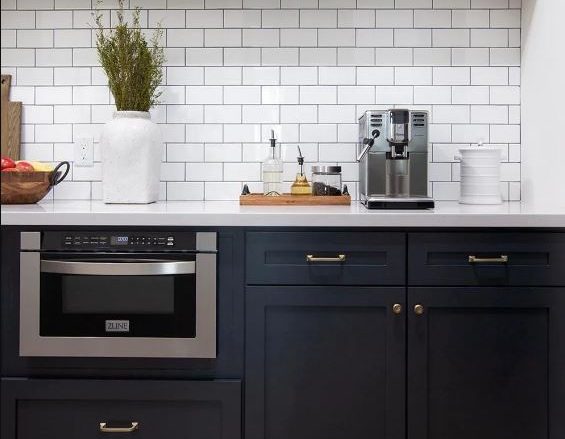For a lot of people, a microwave oven is absolutely essential. It lets you heat food without heating up your house, it can preserve nutrients better than some stovetop cooking, and it’s the fastest way to complete a variety of kitchen tasks. But some microwaves are better than others. In this article, we’ll talk about the different types of microwave oven and what to look for in buying one. We’ll also take a look at multifunction microwaves and their uses.
Types of microwave ovens
All microwave ovens have a magnetron that produces vibrations which agitate water and (to a lesser extent) other molecules, creating heat. While some models may have additional functionality, a microwave oven by definition must be able to cook this way, as regulated by the U.S. Food and Drug Administration. Microwave ovens differ mostly in how they’re designed and how they’ll fit into your kitchen.
Countertop microwaves
The standard microwave oven is the countertop microwave. They’re a relatively large, box-shaped countertop appliance. They range in size from half a cubic foot of internal capacity to over two cubic feet of capacity. Generally, microwaves with less than a cubic foot of capacity are called compact, though definitions vary. Countertop microwaves can be used anywhere there’s a wall outlet—kitchens, dorm rooms, and offices can all have countertop microwaves.
Countertop microwaves come in a variety of styles and sizes, from simple and compact to multifunctional and large, and their wide price range reflects these differences.
In tests, performance has been shown to be fairly consistent across most popular brands, so nice-to-haves, like extra settings, easy-to-use handles, and mute functions, may be the most important factor in choosing a countertop microwave.
Pros:
- Moveable
- Affordable
- Available in a wide range of styles
- Doesn’t have to be installed
Cons:
- Takes up counter space
- May not have great ventilation
Price range: $60-$600
Over-the-range microwaves (microhoods)
Over-the-range (or microhood) microwaves are installed in place of a range hood above your stove top range. They work just like countertop microwaves, but they won’t take up counter space. They also tend to be on the larger size, with most being 30 inches wide (the width of a standard range), though a few compact options are available. These microwave ovens are designed to be used instead of native ventilation and are likely to vent much better than modified countertop models. And since they’re right over the stovetop, they’re conveniently located for use while you’re doing other things.
The main issue with over-the-range microwaves isn’t function but the logistics of installation. To DIY, you’ll probably need an electrical outlet above your range and appropriately installed ductwork. Otherwise, you’ll likely need to hire a professional. Installation costs can range from a few hundred to a few thousand dollars, depending on range setup, so keep that in mind before purchasing. Because of where they’re installed, these microwave ovens may also be harder to reach for shorter people or people with disabilities.
Pros:
- Doesn’t take up counter space
- Better ventilation means fewer food odors
- Conveniently located for complicated cooking jobs
Cons:
- Requires installation
- Won’t work for all range setups
- Will replace stove ventilation
- May be hard to reach
Price range: $130-$1200
Built-in microwaves (integrated microwaves)
Built-in microwaves are, as the name implies, built into cabinets instead of sitting on counters. They’re a lot like over-the-range microwaves, except you have more options of where to place them. Integrated microwaves tend to be on the larger size, with many having an internal capacity of more than two cubic feet. The compact built-in microwaves that are available are often designed specifically for RVs.
Some built-in microwaves are basically countertop microwaves designed to be set into cabinetry, and some countertop microwaves even have trim kits that turn them into built-in microwaves. But other built-ins are very different. These can be called speed ovens, or speed microwaves, and are often paired with wall ovens, which can be mounted together, generally with the microwave on top.. These can also be called combo microwaves.
These microwaves tend to include a broiler heating element or convection baking capabilities, making them a good (or even better) alternative to most air fryers. Some also offer the functionality of steam ovens, toaster ovens, indoor grills, and warming drawers.
Pros:
- Doesn’t take up counter space
- Being located away from the range means more people can cook at once
- More likely to come with additions, like broilers and steaming capabilities
Cons:
- More expensive
- Will take up cabinet space
- Requires installation
Price range: $250-$3500
Drawer microwaves
Drawer microwaves are exactly what they sound like. These microwave ovens replace a drawer (or several) in your kitchen, and you pull them open, like a drawer, to use them. They’re similar to over-the-range and built-in microwaves, but they’ll generally be installed below counter level. Unlike other microwave ovens, however, these don’t have turntables, so cooking may be less even. But this does make them easier to clean.
Unlike countertop ovens, these won’t take up counter space. They may also be easier to use for some people. Of course, if bending down is an issue for you, you may have difficulty using the controls on these microwaves. And since they are lower to the ground, they tend to have child safety locks to prevent accidents.
These microwaves do tend to be pricey, and there aren’t very many on the market, compared to other styles. Moverover, the models that are on the market tend to be pretty similar in function. They are generally either 24″ or 30″ wide, and almost all have an internal capacity around 1.2 cubic feet, which is a little on the small side. These microwaves are the least like countertop microwaves, having a totally different design, which might be a pro or a con, depending on what you need.
Pros:
- Doesn’t take up counter space
- Will often have a child safety lock
- May be easier for people who have issues with lifting heavy objects
- May be easier to clean
Cons:
- Will take up cabinet space
- Often smaller internal capacity
- Heating may be uneven
- Requires installation
- Controls can be harder to reach for some
- Pricey
Price range: $1000-$1600
Convection microwaves
These are basically a combo microwave and convection oven. They have both a magnetron for producing microwaves and a heating element like you might find in an oven, alongside a fan. This heating element allows a convection microwave to roast and broil like a conventional oven, and the fan encourages even cooking and better browning.
Convection microwaves work a lot like air fryers, though the microwaves tend to be larger. In fact, there are few compact convection microwaves available, and most will have more than one cubic foot of internal space. Both are small convection ovens that generally come with a variety of settings. But only a convection microwave allows you to reap the benefits of both the convection and the microwave.
There aren’t a lot of downsides to these microwaves, though they are more expensive than their comparable non-convection counterparts. And, unless you rarely bake large or complicated recipes, they’re unlikely to replace an oven.
Pros:
- Cooks more evenly
- Better at browning
- Makes food crispier
Cons:
- Pricier than similar, non-convection microwaves
- Will not have the capacity of a convection oven
- May have fewer settings than an air fryer
Price range: $200-$600
What to look for in a microwave oven
Though most microwave ovens are similar in function, and almost all (barring the smallest, cheapest models) will get the job done, there are some features that do set them apart. Keep these in mind when you’re looking for a microwave.
- Capacity is one of the main factors that distinguishes microwaves. Capacity can range from half a cubic foot (~15 liters) to more than 2 cubic feet (60+ liters). The most compact models may have difficulty cooking evenly, but for most the question is: how much space do you need?
- Wattage is important, but it might not be as important as you think. Microwave wattage ranges from 600 to more than 1200, and, while you’ll notice large differences in wattage, one or two hundred watts isn’t really going to matter. The least powerful microwaves may not do what you need them to, and the most powerful will be a little bit better at some things, but don’t worry too much about small differences.
- An easy-to-use display, on the other hand, might be one of the most important considerations when purchasing a new microwave. After all, even the best microwaves aren’t very helpful if you can’t use them. Displays should be clear and simple to understand. More settings are great, but not so many that they make the microwave hard to use. And avoid dials, if possible. They can be more difficult to operate.
- Microwaves should also be easy to open. Look for a model with a good handle for easy access. Microwaves that use push buttons instead of handles for opening can be hard to use, especially on slick countertop surfaces.
- A mute function is one of those settings that any good microwave should have, and they’re not as common as you might think. If you want a quiet midnight snack or just don’t want to wake anyone up in the morning, a mute function will be important.
- Additional functionality is always helpful. From convection options to warming modes and broilers, a multifunction microwave is incredibly versatile and can help you complete a variety of kitchen tasks. Though keep in mind that even the best multifunction microwaves won’t be able to fully replace your oven.
- Some microwave ovens have inverters. Traditional microwaves’ power settings don’t actually change the power of the magnetron. Instead, the microwave cycles on and off during the cook time. With an inverter, even on low settings, your microwave will run the entire time, defrosting and dealing with delicate items more smoothly.
Are microwave ovens bad for you?
It’s a common question if microwave ovens are really safe to use. Some of the terminology can be vague, if not downright confusing. So let’s break it down.
Microwaves are a form of electromagnetic radiation. All this means is that microwaves are part of a spectrum that includes, among other things, radio waves and visible light. This spectrum does include some things that fit under the common meaning of the term ‘radiation’. Microwaves, however, cannot irradiate or contaminate your food. During operation, you are personally protected from the non-ionizing radiation by way of the metal shield/screen that lines the inside of the oven.
Ultimately, the dangers of using microwaves are the same as for other cooking methods, namely whether they can cook well enough to prevent food poisoning and the need to be careful of hot temperatures. It’s important to use your microwave according to its manufacturer’s instructions to avoid burns and cook effectively.
For food safety, keep in mind that microwave ovens don’t cook from the inside out, contrary to some popular claims. In fact, they heat from the edge of their walls, inward, meaning the center of your food may remain cool or undercooked, depending on what you’re heating. To offset this in some foods, strategically hollow out the center of whatever you’re heating, so that everything is at the edges of the plate, nearest where the heat will reach it.
When used correctly, microwave ovens are perfectly safe. Lots of research even suggests this form of heating is better at retaining nutrients than some other forms of heating and cooking. This is merely because microwaves heat at lower temperatures, and so don’t have an opportunity to destroy nutrients.
Microwave ovens made in the US
Want to buy a microwave manufactured in the USA? Here are a few brands to look for:
- Dacor, originally called Distinctive Appliances, Incorporated, was founded in 1965 by Stanley Joseph, the developer of the first self-contained ventilating hood for residential use. The company produces a variety of kitchen appliances, the best known being their drawer microwave. Despite being bought by Samsung in 2016, they continue to manufacture their appliances at their facility in City of Industry, California.
- Subzero (also sold under the brand name Wolf specializes in high-end kitchen appliances. They offer a number of built-in and drawer microwaves under the Wolf name. Subzero products are manufactured in Arizona and Wisconsin.
- Whirlpool is one of the largest manufacturers of kitchen appliances in the world. They began as the Upton Machine Company in 1911, manufacturing wringer washers and became well known for their washing machines, rebranding as Whirlpool in 1950. Not all Whirlpool appliances are made in the US, but microwaves sold under the Amana and Magic Chef brands are manufactured mainly in Idaho and California. Some Maytag microwaves are also manufactured in the US.
- Viking manufactures several lines of domestic and commercial kitchen appliances. Beginning with professional ranges in the 1980s, they now offer many appliances at a variety of price points, including built-in and over-the-range microwaves. Viking continues to produce their appliances at several facilities in and around Greenwood, Mississippi.
Microwave oven starter kit
Not sure where to begin? We’ve simplified it for you:
- For a good, cheap microwave that will get the job done, check out Toshiba’s countertop microwave oven. It has a preprogrammed sensor menu, a child safety lock, and a mute function.
- If you want more versatility and have cash to spare, consider one of Sharp’s convection microwaves instead. They tend to be some of the most highly rated convection microwaves on the market. They’ll let you bake, roast, and defrost with a variety of preprogrammed settings. If you’d rather keep your convection cooking separate, check out our air frying guide.
- Need an over-the-range microwave? Take a look at GE’s 30-inch stainless steel over-the-range microwave. It will fit well above most standard-width ovens or ranges.









